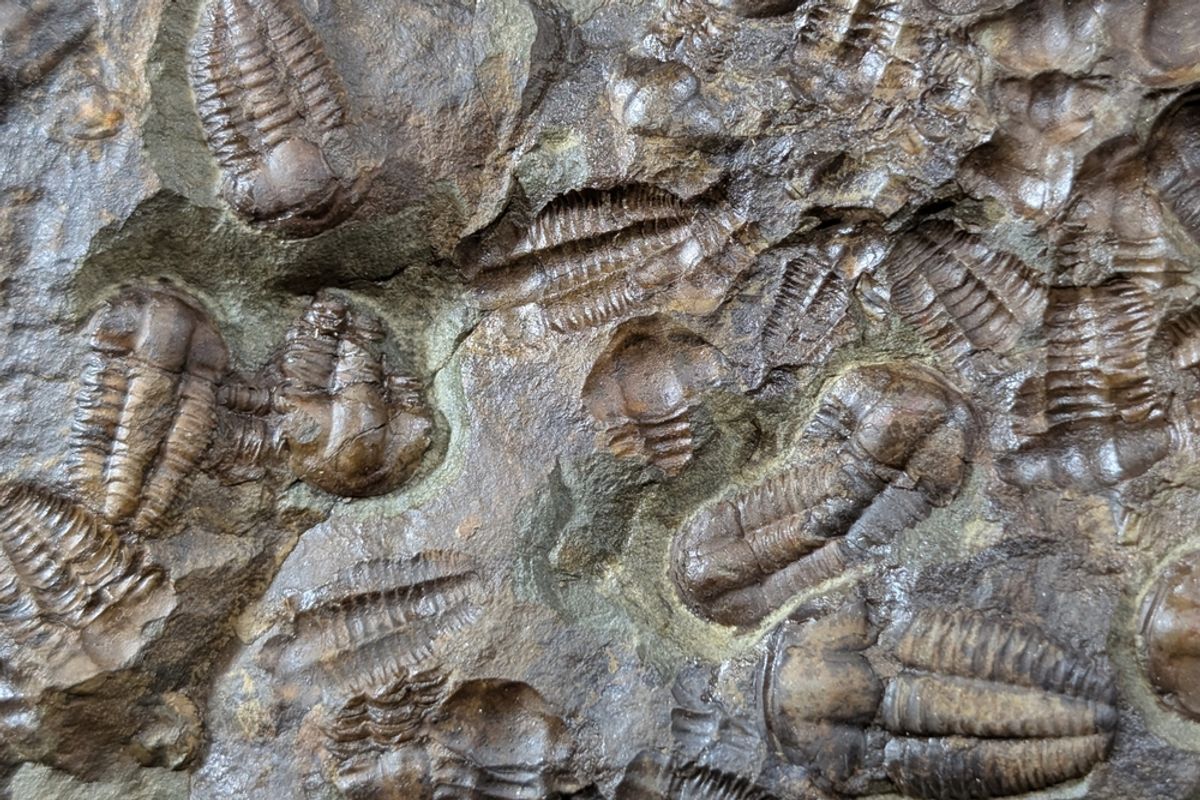Key Takeaways on Animals of the Cambrian Period
- Animals of the Cambrian period went through one of the greatest evolutionary surges in history, known as the Cambrian Explosion.
- Animals of the Cambrian period likely began as worms or worm-like organisms. By the end of the period, however, these animals had developed legs, jaws, teeth, primitive backbones, and compound eyes.
- The largest animal of the Cambrian Period belonged to the group Anomalocaris. They were fierce predators and could reach about three feet long. Though there are remnants of Cambrian animals today, none of the species that existed then are alive today.
The Cambrian, the first period of the Paleozoic era, lasted about 50 million years. That seems like a long time to creatures like us who live around 80 years on average. But in geological time, it’s just a blip. The U.S. National Park Service website puts it like this: If you imagine Earth’s geological history as a calendar year, the Cambrian takes up only four-and-a-half days.
In that relatively brief period, life on Earth underwent the greatest evolutionary surge it has ever known, earning the event the nickname “the Cambrian explosion,” according to the Natural History Museum. For the three billion years that life has existed on Earth, life was mostly single-celled organisms.
Just prior to the Cambrian explosion, there were probably early animals similar to sponges or jellyfish. These eventually developed into tiny worms, explains Erik Sperling, a Stanford University scientist who studies biogeochemistry.
“All the different animals that showed up in the fossil record evolved from relatively simple worms,” he says.
Read More: 518 Million Years Ago, the Biggest, Baddest Predators Were… Worms?
Animals that Existed in the Cambrian Period
By the end of the Cambrian, the fossil record shows animals with legs, jaws, teeth, primitive backbones, and compound eyes. These animals didn’t just develop new anatomical structures, however. They developed new ways of getting on in the world.
“They were making shells and skeletons out of all sorts of different biomaterials. They were adopting all sorts of ways of life, living in the sediment, going up, and swimming in the water column. It was an ecological explosion as much as a diversity explosion,” says Sperling.
The most common (and most famous) animals that appeared in the Cambrian explosion were trilobites. Trilobites were arthropods, a phylum of invertebrates that includes insects, spiders, and crustaceans, such as shrimp and crabs, according to the Natural History Museum. The top part of a trilobite’s body was armored and fossilized well.
Even amateur fossil hunters can find loads of them. Fossils of their soft underbellies are not so common. However, scientists do know that they had jointed legs and compound eyes.
Read More: Spike-Toothed Worm and Other Creatures Lived in Grand Canyon 500 Million Years Ago
The Biggest Animal in the Cambrian Period
For the most part, the animals of the Cambrian were pretty small creatures, but a group called Anomalocaris, a type of arthropod, was around 60 centimeters (about 23 inches) long, maybe as much as about 3 feet (1 meter), according to the Natural History Museum. These were the giants of the Cambrian world, says Sperling.
A fearsome predator, Anomalocaris had good eyesight, making it a good hunter. It likely grabbed soft-bodied prey with its spiky arms.
The Pikaia, a slender fish-like creature with a primitive backbone, arose in the Cambrian and may be a distant ancestor of all vertebrates — including us — according to a study published in Cell Biology.
Though every animal that is alive today is descended from these creatures that erupted in the Cambrian, no species from that period still exists.
What Is the Cambrian Period Known for?
Though scientists have learned a lot about the Cambrian from the fossil record, they’re less sure about what caused this burst of evolution.
“There are about as many hypotheses out there for what caused the Cambrian explosion as there are fields of research,” says Sperling, laughing. “It’s one of these events where everyone seems to see their field of research in the answer, kind of like if you have a hammer, everything looks like a nail.”
One of the more common hypotheses is that a sudden rise in oxygen levels provided the spur for all this new life. However, evidence of big increases in oxygen is sparse. But it may not have taken a big increase.
In a paper published in the journal Nature Geoscience, Sperling and colleagues showed that most animals at that time were living in shallow water where wind and waves could have oxygenated the water, even though oxygen levels at greater depths didn’t change. Sperling says that minor increases in oxygenation could have been enough to drive big ecological changes.
Whatever caused it, the Cambrian was a time of exciting evolution, and it has a lot to teach us about the history of life on Earth — and potentially, says Sperling, about the possibility of life on other planets.
The most interesting questions posed by the Cambrian explosion are, he says, “Did it need to happen? Were animals inevitable on Earth?” Answering those questions can help as we search for life on other planets that have the kinds of environments that can support large, complex, multicellular life.
Read More: Scientists Find Fossilized Brains From 500-Million-Year-Old Arthropods
Article Sources
Our writers at Discovermagazine.com use peer-reviewed studies and high-quality sources for our articles, and our editors review for scientific accuracy and editorial standards. Review the sources used below for this article:

